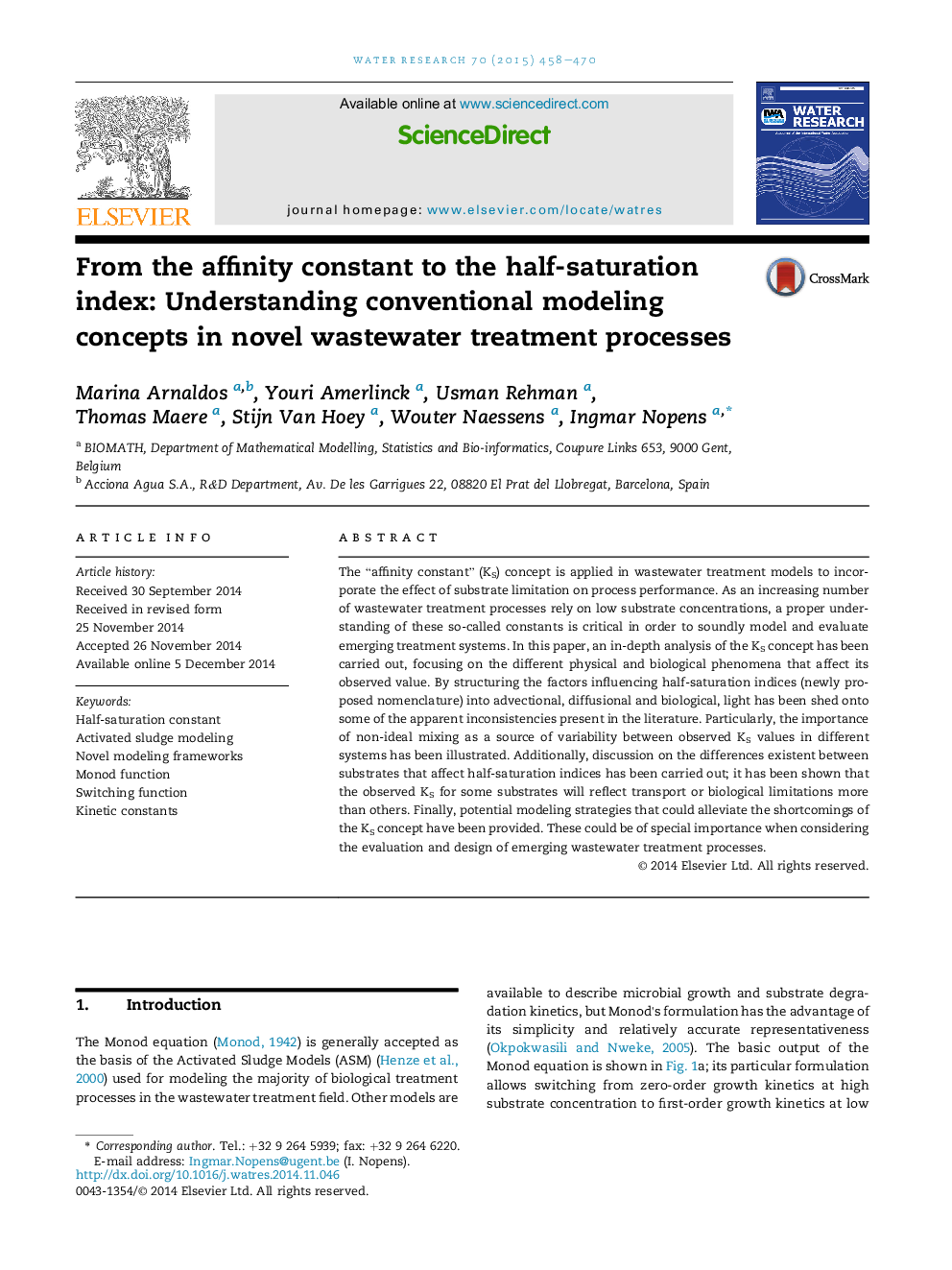| Article ID | Journal | Published Year | Pages | File Type |
|---|---|---|---|---|
| 4481329 | Water Research | 2015 | 13 Pages |
•A critical analysis of the “half-saturation constant” concept has been carried out.•The factors influencing observed values are advectional, diffusional and biological.•Great importance of improper mixing as a source of inconsistencies.•Differences existent between substrates have been discussed.•Novel modeling strategies to alleviate the limitations of the concept are presented.
The “affinity constant” (KS) concept is applied in wastewater treatment models to incorporate the effect of substrate limitation on process performance. As an increasing number of wastewater treatment processes rely on low substrate concentrations, a proper understanding of these so-called constants is critical in order to soundly model and evaluate emerging treatment systems. In this paper, an in-depth analysis of the KS concept has been carried out, focusing on the different physical and biological phenomena that affect its observed value. By structuring the factors influencing half-saturation indices (newly proposed nomenclature) into advectional, diffusional and biological, light has been shed onto some of the apparent inconsistencies present in the literature. Particularly, the importance of non-ideal mixing as a source of variability between observed KS values in different systems has been illustrated. Additionally, discussion on the differences existent between substrates that affect half-saturation indices has been carried out; it has been shown that the observed KS for some substrates will reflect transport or biological limitations more than others. Finally, potential modeling strategies that could alleviate the shortcomings of the KS concept have been provided. These could be of special importance when considering the evaluation and design of emerging wastewater treatment processes.
